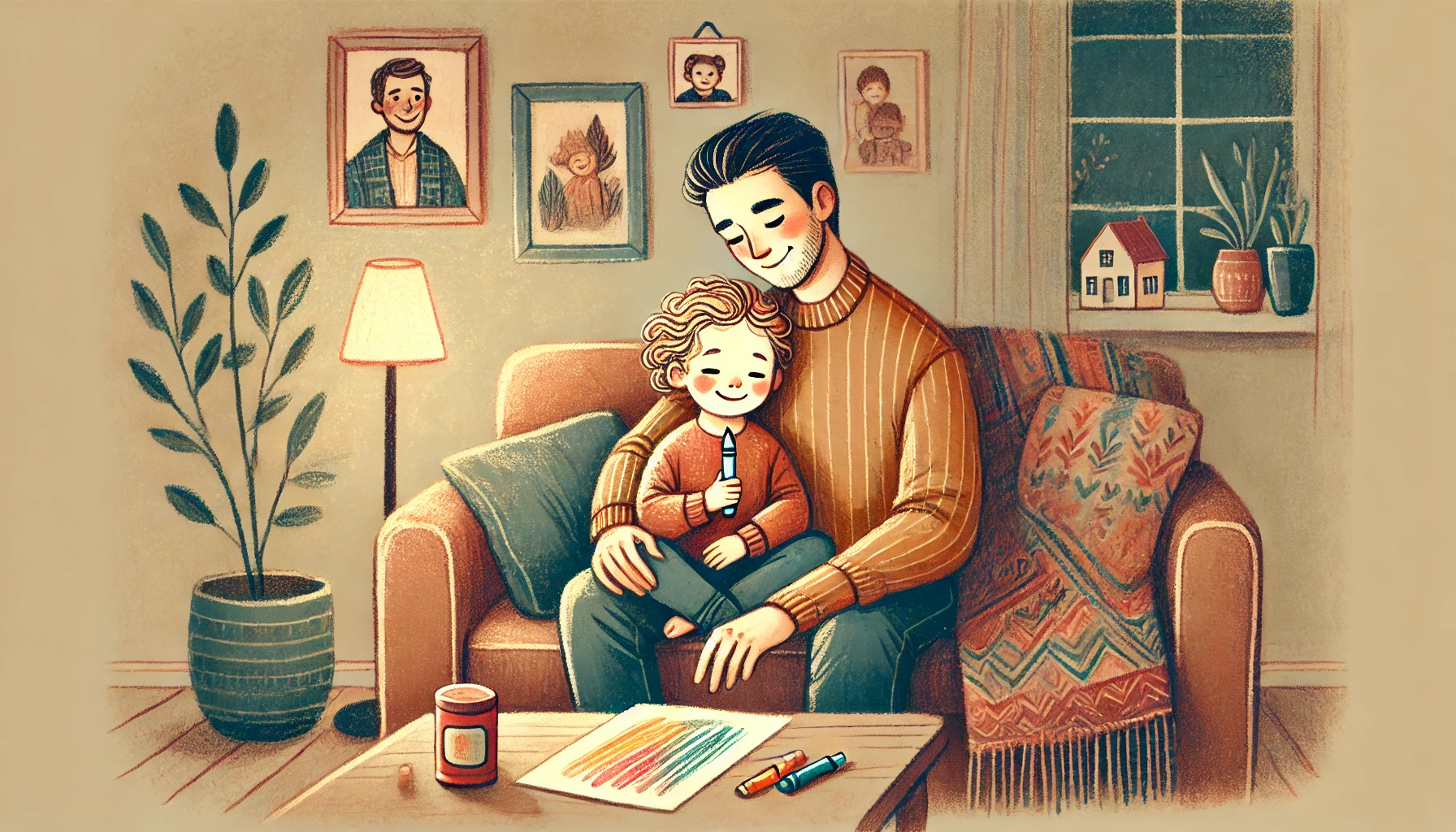Introduction
Cope with Sudden Life Changes: Life is full of unpredictable events, and sudden changes can disrupt our sense of stability, security, and well-being. Whether it’s the loss of a loved one, a career shift, a health diagnosis, or a significant relationship change, sudden life transitions often evoke intense emotions and stress. While change is a natural part of life, coping with unexpected disruptions can be challenging. From a mental health counseling perspective, individuals can develop strategies and tools to navigate these life changes with resilience, self-awareness, and emotional balance.
This article explores how individuals can cope with sudden life changes through therapeutic approaches and mental health strategies. We will examine key frameworks such as Cognitive Behavioral Therapy (CBT), mindfulness, and self-compassion that can help people manage their emotional responses to change. Additionally, we will discuss the role of social support, the importance of fostering adaptability, and practical coping techniques that promote resilience in the face of uncertainty.
Understanding the Impact of Sudden Life Changes
Psychological and Emotional Reactions to Change
When faced with sudden life changes, individuals often experience a range of emotional and psychological responses, including anxiety, grief, shock, and anger. These reactions are natural responses to the disruption of familiar routines and expectations. Change can trigger a sense of loss, whether it’s the loss of a job, a relationship, or a sense of control over one’s life. According to Lazarus and Folkman’s (1984) transactional model of stress, change is often perceived as a threat when individuals feel they lack the resources to cope effectively.
Some common emotional reactions to sudden life changes include:
- Grief and Loss: Life changes such as the death of a loved one, the end of a relationship, or the loss of a job can evoke feelings of grief and mourning. Individuals may experience sadness, disbelief, or a sense of emptiness as they come to terms with their new reality (Kubler-Ross, 1969).
- Fear and Anxiety: Sudden changes often create uncertainty about the future. Anxiety may arise from fears about one’s ability to adapt, financial instability, or concerns about health and well-being. Anxiety is particularly common in situations where individuals feel a lack of control over the outcome (Barlow, 2002).
- Anger and Frustration: Some individuals may feel anger or frustration when faced with sudden changes, especially if they believe the change is unfair or unwarranted. These emotions can be directed at external sources (e.g., a company that laid off employees) or internalized as self-blame (Ellis, 2005).
- Shock and Disbelief: When life changes occur unexpectedly, individuals may experience a state of shock or disbelief. This reaction is common in the immediate aftermath of a significant event, such as a natural disaster, sudden illness, or accident (Janoff-Bulman, 1992).
These emotional responses are normal, but they can become overwhelming without appropriate coping strategies. Mental health counselors work with clients to validate their feelings and guide them through the process of adjusting to their new circumstances.
Coping with Sudden Life Changes:
Mental health counselors help individuals navigate sudden life changes by offering tools and strategies to manage stress, process emotions, and cultivate resilience. The following therapeutic approaches and strategies can provide a foundation for coping with the challenges associated with sudden transitions.
1. Cognitive Behavioral Therapy (CBT) and Reframing Negative Thoughts
Cognitive Behavioral Therapy (CBT) is one of the most effective therapeutic approaches for helping individuals cope with sudden life changes. CBT focuses on identifying and challenging negative thought patterns that contribute to emotional distress. When faced with a sudden life change, individuals often experience cognitive distortions, such as catastrophizing or all-or-nothing thinking (Beck, 2011).
Identifying Cognitive Distortions
Cognitive distortions are irrational and unhelpful thinking patterns that can amplify emotional distress. Some common cognitive distortions in response to sudden life changes include:
- Catastrophizing: Expecting the worst possible outcome, such as “I’ll never recover from this loss” or “My life is ruined because of this change.”
- All-or-nothing thinking: Viewing situations in extremes, such as “If I can’t have things the way they were, I can’t be happy.”
- Overgeneralization: Making broad conclusions based on a single event, such as “Because I lost my job, I’ll never be successful again.”
By identifying these distortions, individuals can begin to challenge and reframe them into more balanced, realistic thoughts. For example, instead of thinking, “I’ll never get through this,” a more adaptive thought might be, “This is difficult, but I have faced challenges before, and I can find a way to move forward.” Reframing negative thoughts helps reduce feelings of helplessness and promotes a more resilient mindset.
Cognitive Restructuring
Cognitive restructuring is a core technique in CBT that involves changing unhelpful or distorted thinking patterns. Counselors guide clients through a process of evaluating the evidence for and against their negative thoughts and developing more constructive alternatives. For example, a client who is struggling with job loss may reframe their initial catastrophic thought, “I’ll never find a new job,” into, “Losing my job is challenging, but I have skills and experience that I can use to find new opportunities.”
By practicing cognitive restructuring, individuals can reduce the emotional impact of sudden life changes and approach their situation with greater clarity and optimism.
2. Mindfulness and Acceptance
Mindfulness is a therapeutic approach that helps individuals stay present in the moment and accept their emotions without judgment. In the context of sudden life changes, mindfulness can help individuals regulate their emotional responses, reduce stress, and cultivate a sense of inner calm (Kabat-Zinn, 1990).
Mindfulness and Emotional Regulation
Mindfulness practices, such as deep breathing, body scans, and meditation, can be particularly helpful for managing the stress and anxiety that often accompany sudden life changes. These practices encourage individuals to focus on the present moment rather than becoming overwhelmed by fears about the future or regrets about the past.
For example, a person who has recently experienced a sudden health diagnosis may feel anxious about their future and uncertain about how to cope. Through mindfulness practices, they can learn to observe their anxious thoughts without becoming consumed by them, allowing them to remain grounded in the present moment.
Acceptance of Change
A key component of mindfulness is acceptance, which involves acknowledging and embracing life’s changes rather than resisting them. While acceptance does not mean passivity, it does involve recognizing that some changes are beyond our control and learning to adapt to new circumstances. By practicing acceptance, individuals can reduce their emotional resistance to change and focus on finding ways to move forward.
In counseling, clients may be guided through mindfulness exercises that encourage them to accept their current reality while also exploring how they can take meaningful action in response to the change. This balance between acceptance and action is central to coping with sudden life changes in a healthy and adaptive way.
3. Self-Compassion in Times of Change
Self-compassion, as defined by Kristin Neff (2011), involves treating oneself with kindness, understanding, and empathy during times of difficulty. When faced with sudden life changes, individuals may be prone to self-criticism, blaming themselves for the change or feeling inadequate in their ability to cope. Practicing self-compassion helps counteract these negative tendencies and fosters emotional resilience.
The Three Components of Self-Compassion
Self-compassion consists of three key components:
- Self-kindness: Offering oneself care and comfort in the face of hardship rather than engaging in harsh self-criticism.
- Common humanity: Recognizing that suffering and change are universal experiences and that one is not alone in facing difficulties.
- Mindfulness: Being present with one’s emotions without becoming overwhelmed by them. This involves acknowledging one’s pain without suppressing or exaggerating it (Neff, 2011).
By cultivating self-compassion, individuals can navigate sudden life changes with greater emotional balance and self-acceptance. For example, a person going through a divorce may practice self-kindness by offering themselves reassurance and reminding themselves that it’s normal to feel sadness or loss during such a transition.
Self-Compassion Exercises
Mental health counselors often guide clients through self-compassion exercises to help them develop a more supportive inner dialogue. One such exercise is the self-compassion break, in which individuals pause during moments of stress to acknowledge their suffering, remind themselves of their common humanity, and offer themselves words of kindness. For instance, someone might say, “This is a difficult moment, but I’m not alone. I’ll get through this with time and care.”
These exercises help individuals build emotional resilience and foster a more compassionate response to their own struggles during times of sudden change.
4. Building a Supportive Network
Social support plays a critical role in coping with sudden life changes. Research has consistently shown that individuals with strong social connections can better manage stress, recover from adversity, and maintain mental health (Cohen & Wills, 1985). Supportive relationships provide emotional validation, practical assistance, and a sense of belonging, all of which are essential during times of transition.
The Importance of Reaching Out
Many people are hesitant to reach out for support during times of change, either because they don’t want to burden others or because they feel ashamed of their struggles. However, connecting with friends, family members, or support groups can provide much-needed emotional relief and perspective. Mental health counselors often encourage clients to reach out to their social networks and communicate their needs openly.
For example, a client dealing with the loss of a loved one may benefit from seeking out a grief support group where they can share their experience with others who are going through similar emotions. They can process their grief in a supportive and nonjudgmental environment by talking about their feelings.
Strengthening Social Connections
Counselors can also help clients strengthen their existing social connections and develop new ones. This may involve improving communication skills, setting boundaries, or participating in activities that foster a sense of community. By building a strong support network, individuals can increase their emotional resilience and reduce the isolation often accompanying sudden life changes.
5. Fostering Adaptability and Flexibility
Adaptability is a key component of resilience, especially in the face of sudden life changes. Psychological flexibility refers to the ability to adjust one’s thinking, emotions, and behavior in response to changing circumstances. Individuals who are psychologically flexible are better able to cope with uncertainty, adapt to new situations, and find creative solutions to problems (Hayes, Strosahl, & Wilson, 2011).
Developing a Growth Mindset
One way to foster adaptability is by cultivating a growth mindset, which believes that abilities and intelligence can be developed through effort and learning (Dweck, 2006). People with a growth mindset are more likely to view challenges as opportunities for growth rather than as threats to their well-being. For example, a person who loses their job may view the experience as an opportunity to learn new skills or pursue a different career path rather than as a personal failure.
Counselors often work with clients to develop a growth-oriented perspective by helping them reframe challenges as learning experiences. This mindset encourages individuals to embrace change with curiosity and openness rather than fear or resistance.
Encouraging Problem-Solving and Creativity
Adaptability also involves the ability to approach problems with creativity and resourcefulness. Mental health counselors can guide clients through problem-solving exercises that encourage them to break down challenges into manageable steps, brainstorm potential solutions, and evaluate the outcomes of their actions.
By fostering problem-solving skills and creative thinking, individuals can feel more empowered to navigate sudden life changes and take proactive steps toward positive outcomes.
Conclusion
Coping with sudden life changes can be emotionally overwhelming, but with the right strategies and support, individuals can navigate these transitions with resilience and strength. From a mental health counseling perspective, therapeutic approaches such as Cognitive Behavioral Therapy (CBT), mindfulness, and self-compassion provide valuable tools for managing the stress, anxiety, and grief that often accompany unexpected changes. Additionally, building a strong social support network and fostering psychological flexibility can help individuals adapt to new circumstances and find meaning in the midst of change.
While sudden life changes are often difficult and disruptive, they can also offer opportunities for personal growth, self-discovery, and new beginnings. By cultivating resilience and practicing self-compassion, individuals can not only survive life’s changes but thrive in the face of adversity.
References
Beck, J. S. (2011). Cognitive behavior therapy: Basics and beyond (2nd ed.). Guilford Press.
Dweck, C. S. (2006). Mindset: The new psychology of success. Random House.
Janoff-Bulman, R. (1992). Shattered assumptions: Towards a new psychology of trauma. Free Press.
Kubler-Ross, E. (1969). On death and dying. Macmillan.
Neff, K. (2011). Self-compassion: The proven power of being kind to yourself. William Morrow.






